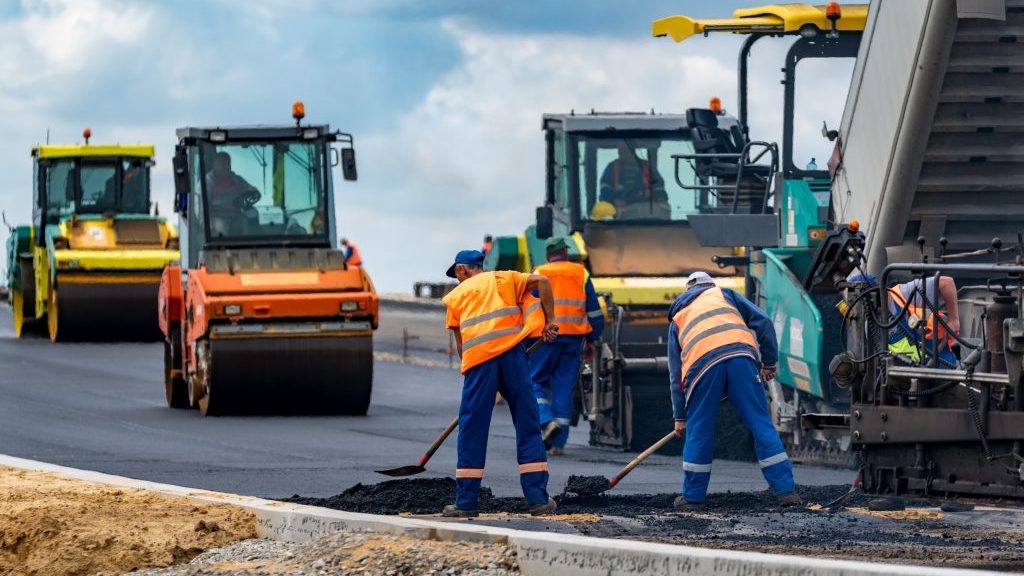You could say 2021 was a flat year for the paving sector.
Beset by the COVID-19 pandemic, which dragged on the economy and impacted asphalt paving activities, there were some positive signs, however, says Doubra Ambaiowei director of the technical services division at the Ontario Road Builders’ Association.
“The pandemic has had its measured effects on asphalt paving projects and the roadbuilding industry in Ontario this year,” he says.
“Relative to 2020, 2021 municipal HMA (hot-mix asphalt) tonnages did not really change in central Ontario.
“However, southeastern, southwestern and northern Ontario were down somewhat, about 20 per cent, three per cent and 14 per cent respectively.”
“Volumes were down by MTO and municipalities collectively, but private development paving appears to be increasing since 2020. So, progress has been good.”
On the plus side, the year wasn’t as bad as some feared.
“Typically, Ontario municipalities were paving on average between 5.3 and 5.6 million tonnes per year, and the MTO paves between 2.5 and 3.0 million tonnes per year,” Ambaiowei says.
“For example, a ton of asphalt covers 2.8 to 7.4 square metres. A two-car driveway needs 7.5 to 18 tons of asphalt, depending on the pavement lift thickness.”
He says the 2021 forecasted average reported for municipal HMA tonnages is 1.053,940 tonnes but that is not a reliable metric.
“There were pandemic effects on paving projects, such as delays in paving operations and budget restrictions, but the low forecast was partly due to only a 10 per cent response rate to the survey circulated to all Ontario’s 444 municipalities.
“It is possible more asphalt was laid in comparison to the available data.”
Looking ahead, he says, the reopening of businesses and pandemic restrictions lessening should drive improvements in the paving and roadbuilding industry.
“This factors the anticipated gains from the projected government spending increases, with $2.6 billion reaffirmed for 580 highway expansions and rehabilitation projects, and $475 million over five years for large bridge rehabilitation projects in southern Ontario; including the new Skilled Trades Strategy that will receive an additional $90.3 million over the next three years to enhance Ontario Youth Apprenticeship Programs and pre-apprenticeship training programs,” he says.
Meanwhile, Ambaiowei adds, the sector stakeholders continue consultations with the MTO to reintroduce use of warm mix asphalt (WMA) in Ontario, via a non-standard specification.
“This will enhance a reduction in the temperatures at which asphalt mixtures are produced and placed, relative to traditional HMA,” he says.
“This reduction usually varies from 10 to 30 C and the lower temperatures generate fewer emissions and require less energy than HMA while maintaining or enhancing pavement performance.
“Some municipalities are currently specifying WMA, but we anticipate that many more will catch-on to the benefits and start using WMA on their paving projects.”
As for asphalt generally, according to consulting and analytics firm Ibis, the manufacturing sector in Canada will see growth for at least five years driven by demand from key sectors.
However, it says in a report published last August, growth with be slow given continued economic uncertainty over how quickly things will recover from COVID.
“Government construction and infrastructure expenditure will likely continue to provide a steady source of support for the industry, and the volatility in commodity prices are expected to temper off slightly over the next five years as economic conditions improve,” the report says.
“These factors are expected to lead to steady demand for nonresidential construction. Meanwhile, demand from the United States will likely remain elevated due to a favourable exchange rate and burgeoning construction there.”











Recent Comments